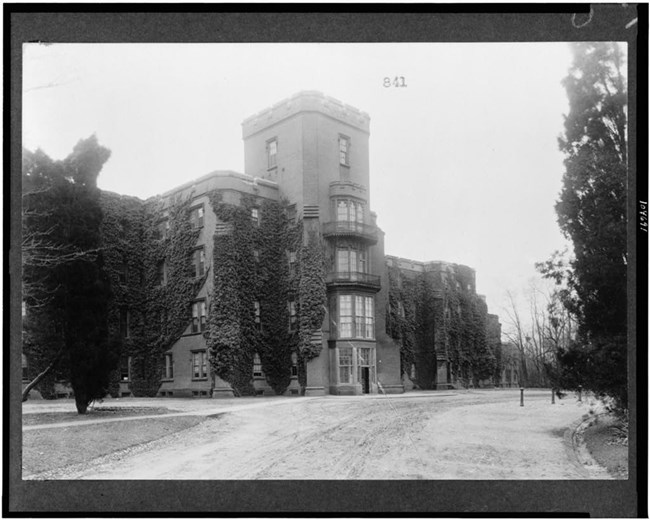
Library of Congress In 1891, the federal government purchased the former DeButts property and the neighboring Berry farm. The property became part of the Government Hospital for the Insane, later known as St. Elizabeths Hospital. The hospital practiced Moral Treatment, which rejected dark cells and physical restraints in favor of clean, spacious, well-ventilated buildings located in peaceful, rural areas. Patients were treated with kindness and dignity and encouraged to occupy themselves with both work and leisure.Superintendent William Godding believed that farm work would benefit patients. Working outdoors, he wrote, was “preferable to listless mental decay in… wards…”. A less noble motive was financial considerations. An easy way for a public institution to save money was through unpaid patient labor, a practice that is now illegal.

Library of Congress By the 1960s, St. Elizabeths was shrinking. With its population in decline, the hospital closed the Godding Croft and began obtaining food externally. The land was transferred to the National Park Service to become the Oxon Hill Children's Farm, which opened in 1967. FYI: "Croft" is a Scottish word meaning a small farm. |
Last updated: February 20, 2024
